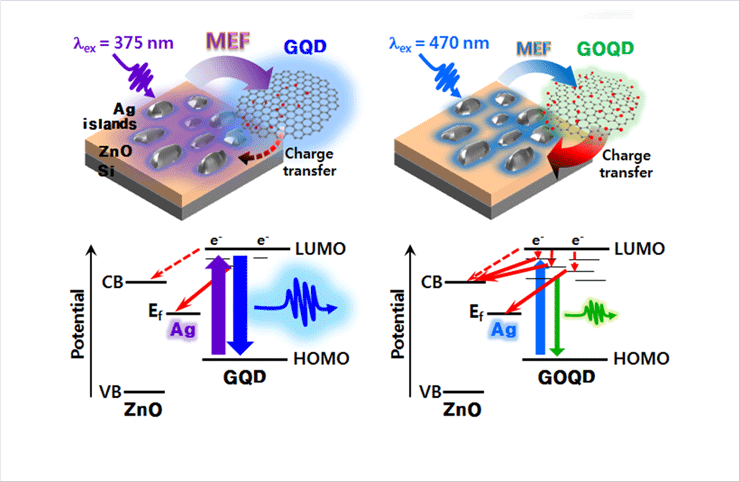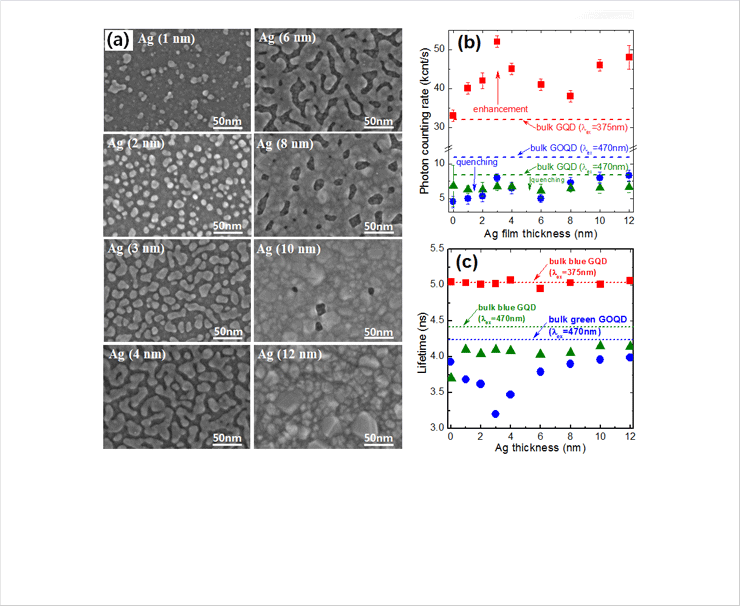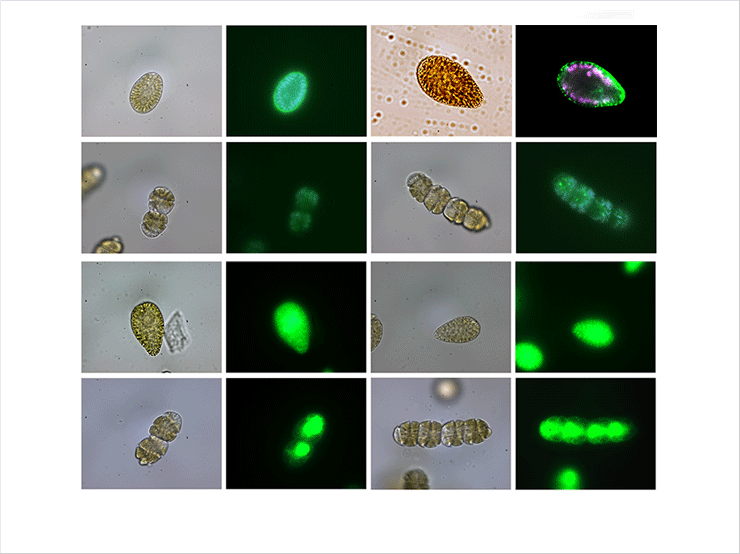Regional Analytical Science
Detailed research information Daegu Center > Regional Analytical Science > Major Research Activities Home
Research Focus
- Research support for industries, enterprises, and universities in Daegu- Kyungpook through the operation of advanced analytical equipment
- Technical support and collaborations with local companies in the smart IT field
- Analytical characterization and fluorescence imaging of harmful microalgae for the toxic mechanism
- Collaborative research with Kyungpook National University for a study of humidity and light stability and development of halide perovskites through optical spectroscopy analysis
Representative Research Cases
Surface plasmon induced fluorescence enhancement of graphene quantum dots
- Recently, carbon nanoparticles and graphene quantum dots (GQD) have been used as fluorescent probes. Several groups have reported notable results on cell and tissue imaging using GQD. However, the emission quantum yield of GQD probes is still low. Here, we firstly study the plasmonic metal-enhanced fluorescence properties of blue-emitting GQD and green-emitting graphene oxide quantum dots (GOQD) using fluorescence lifetime imaging microscopy which is built in KBSI, Daegu Center.
- In this study, reactive ion sputtered silver (Ag) nanofilms deposited on ZnO/Si wafers are used as substrates. The fluorescence properties of GQD and GOQD on the Ag nanofilms are modulated in terms of the intensities and lifetimes as the morphology of the Ag layers changes. Interestingly, the fluorescence of GQD is enhanced, while that of GOQD is quenched due to the charge transfer process to Ag nanofilms and ZnO substrate. Moreover, GQD and GOQD exhibit different fluorescence lifetime behaviors due to the effect of their electronic configurations.
- This interesting research has been carefully conducted using the state-of-the-art instrumentation of time- and space-resolved fluorescence confocal microscope which is built in KBSI, Daegu Center. As a results, the unique excited state dynamics was precisely demonstrated, for the first time, for the graphene quantum dots depending on the density of oxygen content near the structured Ag nanofilms (KAIST provided GQD and GOQD).
- From the experimental and theoretical studies, conclusively, we newly found that both the morphology of the plasmonic metal and the electronic states configuration of GQD or GOQD are all important factors and should cooperate with each other to maximize metal-enhanced fluorescence.
- We hopefully expect that the newly revealed photo-physics in metal coupled GQDs would be very useful for further applications in photo-conversion, smart electronic material, and biological cell imaging fields.
 Illustration of the electronic transitions of the GQD and GOQD near Ag deposited on the ZnO substrate.
Illustration of the electronic transitions of the GQD and GOQD near Ag deposited on the ZnO substrate.
 (a) SEM images of the Ag nanofilms grown by the reactive sputtering process on ZnO substrates, (b) Fluorescence photon counting rates of the GQD (square) and GOQD (circle) near Ag nanofilms. The dotted lines indicate the photon counting rates of the bulk GQD and bulk GOQD solutions as control references. (c) Fluorescence lifetimes of the GQD (square) and GOQD (circle) near Ag nanofilms on ZnO-coated Si substrates.
(a) SEM images of the Ag nanofilms grown by the reactive sputtering process on ZnO substrates, (b) Fluorescence photon counting rates of the GQD (square) and GOQD (circle) near Ag nanofilms. The dotted lines indicate the photon counting rates of the bulk GQD and bulk GOQD solutions as control references. (c) Fluorescence lifetimes of the GQD (square) and GOQD (circle) near Ag nanofilms on ZnO-coated Si substrates.
Analytical characterization and fluorescence imaging of harmful microalgae for the toxic mechanism
- Research of toxic mechanism of harmful microalgae (phytoplankton) causing harmful algae blooms (green & red tide) occurring marine and freshwater in domestic and overseas
- Development of biochemical analysis method capable of rapid diagnosis and control of harmful microalgae to verify the expression of reactive oxygen species using a fluorescent substance
 Detection of Superoxide Anion & Hydrogen Peroxide
Detection of Superoxide Anion & Hydrogen Peroxide


